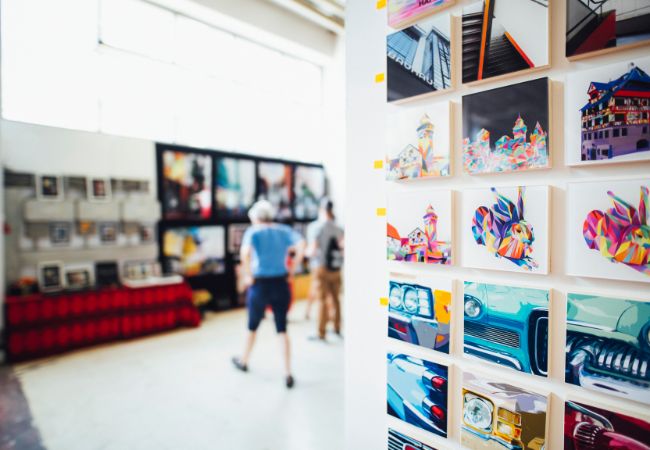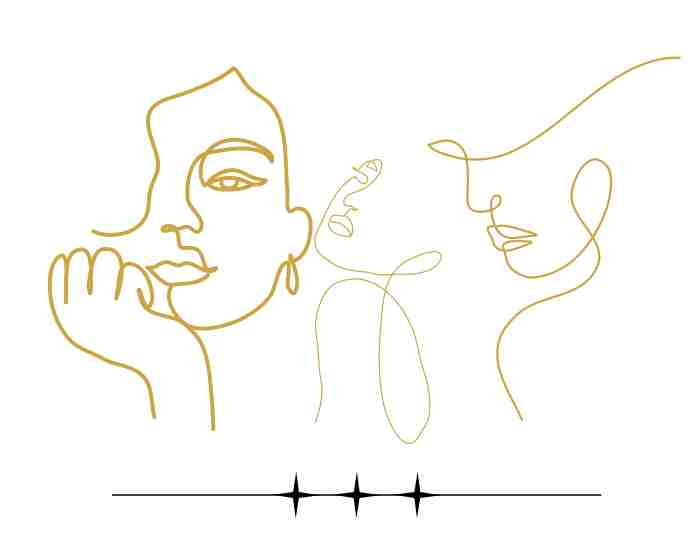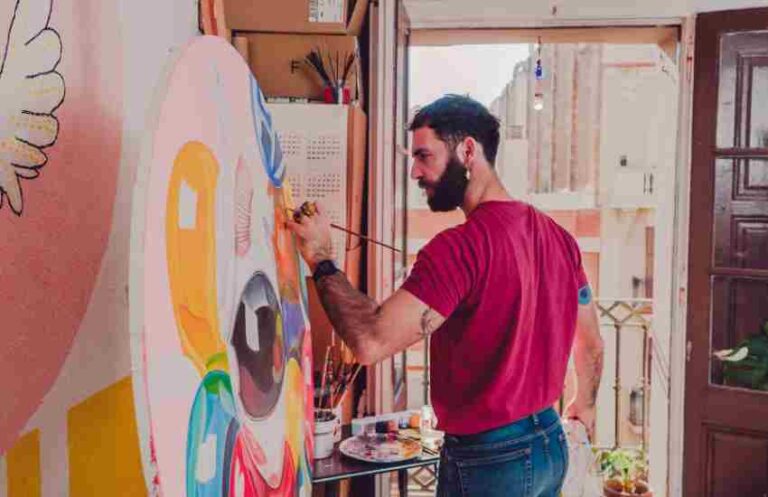Exploring world-renowned collections as if you were in the Louvre or the Uffizi Gallery – all from the comfort of your home? Sounds like a dream right? But thanks to virtual tours, this isn’t a dream anymore. This has completely reshaped the way people interact with the art world and makes seeing paintings like the Mona Lisa at the Louvre or the Night Watch at the Rijksmuseum an absolute piece of cake. Now all you have to do to get a glimpse at such art pieces is to sit back, relax and connect to the internet.
In the case of Google arts, it is almost always high-definition tours being offered in collaboration with an array of museums. Such tours are interactive which makes the entire experience all the more immersive. Instead of just staring at static pictures and wondering how a museum looks like, with just a click or two, you can just and “walk” inside a museum, zoom in to paintings or listen to art historians talk about the piece. It is unlike anything else you’d imagine.
Whether you are an aficionado of modern art or vintage relics, these virtual exhibitions bring top-tier collections to your device, making them easier to browse. Art enthusiasts have the opportunity to view the works of Van Gogh, Rembrandt, and also Michelangelo in their couch. Virtual tours aren’t mere replacements for actual excursions, they come with a set of perks, like being able to visit several museums within the same day, or even taking your time and checking out private shows that are not available to the guests at a particular moment.
Let’s have a look at how we can take best advantage of this type of experience and feel like we belong somewhere in the museum’s corridors. This guide will illustrate the possibilities that such virtual tours offer, offer recommendations for efficient use of them, as well as show the most interesting virtual art museums existing now.
The Growth of Digital Art Museums: Another Step Forward In Art Study
Since the advent of online tours, art exploration has entered a different phase as many art museums from different regions of the world started incorporating online tours. This transition to the online sphere has ensured and facilitated equal and inclusive access to art pieces as anyone from anywhere in world can now experience art pieces that were previously limited to renowned great halls. For ages, admiring art pieces such as Van Gogh’s Starry Night or Rembrandt’s The Night Watch was only possible in certain regions, cities which meant long waiting periods and queuing up but now with virtual tours all this is no longer an issue.
Take for instance the Louvre located in Paris which is quoted among the most frequented museums globally, it provides an online access which includes not only the Mona Lisa but also the various artefacts and its tremendous variety of sculptures. This online tour gives people the freedom to move at their desired pace whilst visiting the different galleries of the Louvre, they also have the option of zooming into certain items such as the different artefacts where they can view more detailed information about the specific item, some encompassing its background and the narrative behind it. The online tour of the Louvre is one of the many museum initiatives aimed at reaching out to both local and people from all across the globe.
The Google Arts & Culture platform is a game-changer in this space. For instance, it has collaborated with the Pergamon Museum in Berlin and the Uffizi Gallery in Florence to offer online tours free of charge that are both entertaining and informative. Google Arts & Culture provides virtual museums with high quality images of the artwork, engaging art, as well as valuable educational material. Through this platform, users are able to access artworks from different periods, uncover the narratives of the pieces, and attend virtual exhibitions organized by experts.
Why Virtual Art Tours Are Perfect for Art Lovers
Art lovers have one considerable advantage over traditional museum goers. They can walk into the permanent collections as well as temporary exhibitions without paying for them. A more prominent example of these advantages however are virtual tours, where a visit to a museum is unrestricted by business hours, locations and in some cases even entrance fees to see some of the most well known art pieces from all over the globe.
The convenience stems from the fact that it is possible to visit such establishments at any hour of the day. This sort of freedom can prove to be advantageous for those who desire to concentrate on their works of art without worrying about closing times or large galleries. For example, sitting next to The Night Watch at the Rijksmuseum or David by Michelangelo at Uffizi in one sit is actually more comfortable when compared to being at the actual site.
Say, Google Arts & Culture is able to make the most out of such knowledge with audio and video content, which as its major benefit combines animated talks with curators and art historians with each artwork. In other words, a virtual trip is more than visual; it touches on such concepts as history and culture. For example, stargazing in Van Gogh’s Starry Night, you might think about how colour and brushstrokes were employed by the artist as a result of his state of mind, and an art historian could enhance your understanding of the painting and its significance.
Seeing the world: How to use virtual tours
Seeing the world through virtual tours is more than just clicking photographs; it is using the 3D environment the best you can in order to enhance your overall experience. After going on to google, and searching for your desired museum, it is best to first walk through the virtual tour interface, be it a sponsored studio by google arts and culture or a digital studio set up by the museum. Knowing what features are there will help you make the most of the tour, moving through the museum’s galleries in an efficient and smooth manner that makes sense.
Make sure to use the interactive maps as the main tool for navigable features of the gallery, as they primarily contain a sort of outline or a floor plan of the museum which you can click on different rooms or exhibits. Following these maps can allow you to move across a gallery as you would inside a real life museum. This technique aids you in maintaining an orientation and the structure of your online visit.
You have to zoom in for details such as the painstaking brush strokes or the small divots in the sculpture’s surface that elevate the artwork. Van Gogh’s Starry Night or Van gogh’s Deep Blue are so exquisite and so detailed that when watching them I always attempt to study them up close, this way I can see the carbon structure more closely and analyze the paint. The same goes for paintings like Michelangelo’s David, however instead of the carbon structure I look at the veins of David’s hands and other such details. The artwork can be understood better and so can the experience which works almost the same as going to visit in person.
Interact with the supplementary materials provided via the virtual tour for an even more enhanced experience. Several museums host lectures, provide audio guidance and hold discussions that focus on contemporary artwork and all of these can be useful. For instance, while visiting the Uffizi, there may be a lecture on art in the Renaissance, this would give context to Botticelli’s Birth of Venus. It is evident that these materials are developed in a way to ensure that the virtual tour is both educational and enjoyable to the person viewing it.
Engage With More Activities During Your Virtual Xu Garden Museum Tour
Creating an atmosphere that is conducive and facilitates the enjoyment of the tour is how you take your virtual museum experience to the next level, which is certainly not sitting idly and simply looking at artwork on the screen. Using a computer or a tablet may provide a greater level user experience when compared to a mobile phone. Not only will a larger screen ensure that the paintings are more detailed but it will also mean that the entirety of the work will feel more immersive, thus giving the viewer a better idea of the piece’s dimensions and construction.
As you explore the Louvre, try to look out for those artifacts while listening to some classical music. The grandeur of several of the pieces in the Louvre collection requires you to compliment it with some music. Alternatively, you can listen to an art-specific podcast to enable some commentary over the pieces which you might be watching making it more relatable. This fusion of sight and sound provides you with a multi-layered experience building a more engaging experience.
Once you begin the virtual tour, note down your favorite aspects of certain pieces as well as other elements of the artworks you find interesting. Moreover, you are also recommended to add your own observations to the collection that you have made which you may use for future references or even review. The compiled list of screenshots, after a virtual tour of the Rijksmuseum serves as a visual depiction that aids you through your exploration of Dutch masterpieces alongside notes that further assist the understanding of their compositions and techniques.
Another useful enhancement to the virtual tour experience is sharing it on social networks. By mentioning the museum or the artist, and adding the key hashtags, you are likely to find other people interested in art. Such engagement can also generate conversations, suggestions for different virtual tours, and further interactions within the art sphere. For example, after attending a virtual tour of the British Museum, you may wish to post an image of the Rosetta Stone with the caption you feel represents it the best, and encourage others to do the same.
Top Virtual Art Museum Tours You Can’t Miss
How to Tour an Art Museum Without Ever Leaving Home would not be complete without noting several of the virtual tours you need to see in person. These tours are the best that virtual museums can deliver which digitizes of some of the world’s most renowned artworks, collections and more in a format that can be accessed by all.
Louvre, Paris Explore the most popular museum in the world which contains the Mona Lisa and Venus de Milo sculpture. During the Louvre’s virtual tour, one gets to intimately look at the amassed collection of Egyptian artifacts, Greek sculptures, Renaissance paintings and more. With high-definition of pictures, one may click on even the tiniest components and look into its history and other important aspects.
- British Museum, London: Relive the history through the use of the Rosetta Stone and the Parthenon sculptures. As Egypt’s civilization is a part of history, the British Museum’s virtual tour accumulates artifacts from ancient civilizations and presents a beautiful picture of history and culture. Moving through different sections of the museum, one can uncover treasures of Egyptian mummies Roman mosaics etc.
- Uffizi Gallery, Florence: A closer look at the works of Michelangelo, Leonardo da Vinci, and Botticelli during the Renaissance. The virtual tour of the Uffizi Gallery gives you the chance to view its collection of Renaissance masterpieces and even improve them by zooming in on specific details of the painting or sculpture. End to the dust, and feel the experience alongside the audio commentaries and provision with contextual information with each piece of art.
- The Rijksmuseum, Amsterdam: This museum boasts Dutch masterpieces that include Rembrandt’s Night Watch, make sure not to miss it. Taking a virtual tour of the Rijksmuseum allows you to look back at the Dutch art’s Golden Age. It allows you to wander around the museum’s rooms, look up paintings of various Dutch masters such as Vermeer and Hals, and learn about them. This is one of the best tours in European art history.
FAQs
What Do I Require to Go Virtually to an Art Museum?
High Bandwidth – A good internet connection is required for an optimized online art museum tour so that there are no interruptions while streaming the videos and images.
In order to have a good view of the displayed art works, one needs a device with a nice screen. Cell phones, tablets as well as computers are included. Tablets and computers are the preferred options as the large screens allow for a more immersive experience and allow for more intricate details of the piece to be viewed.
Headphones are of course not necessary but it is highly recommended to have them, especially for the audio part. Take for example how many virtual tours use audio guides or lectures to provide an insight into the artworks and exhibits. Without headphones these resources could easily be drowned out by background noise.
Are virtual art museum tours free?
Many virtual art museum tours do not come with a price tag, such as those available through Google Arts and Culture which allow access to an extensive selection of virtual tours while costing nothing. These tours offer in-depth views of museum collections such as famous paintings and historical artifacts.
However, some museums can charge for content or for lead tours. For example, the owners of special virtual exhibitions or the providers of in-depth guided tours might charge for their services. Be sure to visit the website of the museum or the tour provider so that you know about any corresponding fees that might be applicable.
Can I tour multiple museums in one day?
Yes, virtual tours allow for easy visits to several museums in a single day. Unlike going to the museum where people have to travel sometimes have to wait a long time, virtual tours allow one to shift from one museum to another in a matter of minutes.
You can start off at the Louvre’s in the morning, British Museum in the afternoon and end your day off at the Uffizi gallery or the Rijksmuseum. Such flexibility allows for an exploration of art to be altered so that it can be a reflection of your schedule and preferences.
Art is an important part of human culture and much effort is given to preserving it, as its worth is irreplaceable. Every work of art holds a deep meaning that needs to be understood and explained, and such interpretation is at the helm of defeat the boundaries of time and place.
Artistic canvas confines space in time, granting an opportunity at deep understanding to the beholder. Every art has a narrative and a set of ideas that stem from its creator. Rifki Craze in his paper, ‘Impasive Matrix – An analysis of the phenomenological conditions behind production of Three Properties,’ goes on and emphasizes that an effort is made to ensure that every piece of art produces an experience through the insight of an artist. Art captures extravagant moments that know no confines.
As it turns out, geography is not vital when deciding whether to visit a museum or not. One’s sitting area as long as a decent internet connection is enough to substitute the need to visit an art gallery and browse through thousands of exhibits as with the evolution of technology VR tours were embraced. In these virtual rounds, in two clicks activities, diving into art and culture was made readily available to the masses as the relevance of art needs to be preserved.
Such digital experiences can all be found by searching within the modern art and by searching in further categories, everyone will be able to find something to their liking. Virtual tours allow people from all over the globe to access exhibitions throughout the world and remove any obstacles in exploring art.
Gotcha! Grab a decent cup of coffee and let’s begin touring and delving into the world of art while being at the comfort of your own home.
More Post






